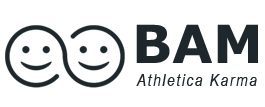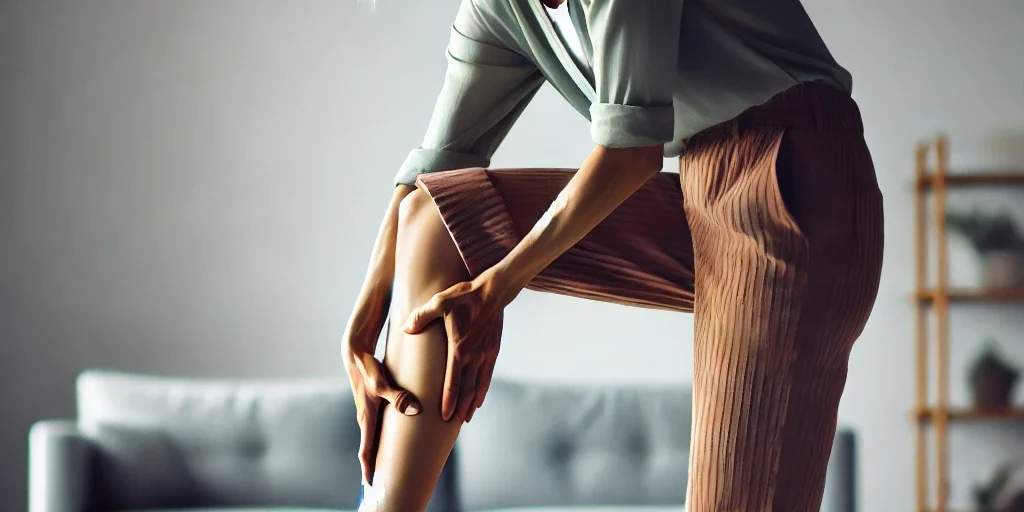My calf muscles are so tight, it's like they're constantly on the verge of cramping up. My stretches doesn't seem to help much. – Sarah Mitchell
Calf tightness is a common issue that many of us have experienced at some point, whether it’s from an intense workout, a long day of hiking, or even while lying in bed.
That unmistakable sensation of a tight calf muscle can range from a mild discomfort to a sharp, gripping pain that can interrupt your activities or even wake you up in the middle of the night with a painful cramp.
For athletes, runners, or even those who enjoy outdoor activities like hiking, tight calves can be an all-too-familiar problem.
In this post, I’ll share an some effective tops how to effectively loosen a tight calf muscle, and not just for relief, but also to help preventing further issues down the road.
Causes and Symptoms of Tight Calf Muscles
A tight calf muscle can be triggered by various activities and conditions. Common causes include:
- Exercise and Physical Activity: Running, jogging, and other high-impact activities can put a lot of strain on the calf muscles. Even activities like hiking, especially on steep or uneven terrain, can cause the calves to tighten due to the increased effort required to stabilize the lower leg.
- Dehydration and Electrolyte Imbalance: Often, calf tightness or cramps occur at night, disrupting your sleep. This can be due to dehydration or an imbalance in electrolytes, which are essential for muscle function.
- Skipping Stretching: Skipping warm-ups or cool-downs after exercise can lead to muscle stiffness. The calves, being one of the most active muscle groups during running or walking, are particularly prone to tightness if not properly stretched.
- Poor Footwear: Wearing shoes without proper support can lead to overuse of the calf muscles, especially if you spend a lot of time on your feet or engage in activities like hiking or running.
Tips to Loosen a Tight Calf Muscle
Relieving a tight calf muscle can be done through a combination of stretching, self-care techniques, and tools designed to target the affected area. Here are some effective tips:
1. Gentle Stretching Exercises
One of the most straightforward ways to relieve tight calves is through stretching.
A simple calf stretch involves standing with your hands against a wall, one foot forward with a bent knee, and the other foot back with a straight knee.
Push your hips forward while keeping your back heel on the ground to stretch the calf muscle. Hold for 20-30 seconds and switch sides.
Dynamic Stretching: Before engaging in physical activity, it’s essential to prepare your muscles with dynamic stretching. This might include ankle circles, leg swings, or a gentle march in place to increase blood flow to the calves.
2. Massage and Foam Rolling
Using a foam roller to massage the calf muscles can help alleviate tightness by breaking up muscle knots and increasing blood flow.
Place the foam roller under your calf and gently roll back and forth, focusing on any tender spots. This self-myofascial release technique can be done daily and is particularly useful after a workout.
Massage Ball: For more targeted relief, a massage ball can be used to apply pressure to specific areas of tightness. This can be especially helpful for deep muscle tension that’s hard to reach with a foam roller.
3. Use a Slant Board or Calf Stretcher
Incorporating a slant board into your routine can be a game-changer for loosening tight calf muscles.
A slant board is a versatile tool that allows you to perform calf stretches at different angles, providing a deeper stretch than traditional methods. By standing on a slant board with your heels lower than your toes, you can effectively stretch both the gastrocnemius and soleus muscles in the calf.
Browse Amazon.com for a ( slant board for calf stretching) to find one for your home that you and the everyone in the family can use.
Why everyone should have a slant board or calf stretcher at home
- Prevents Injuries: Regular use of a slant board can help prevent common lower leg injuries such as plantar fasciitis and Achilles tendonitis by keeping the calf muscles flexible and strong.
- Improves Balance and Mobility: Stretching on a slant board also engages the stabilizing muscles in your legs, improving your balance and overall mobility. As we age, our balance, flexibility and mobility are crucial to prevent falls and injuries. I’m sure we can all relate to a parent, neighbour or friend who is middle-age or senior and had a bad fall. Having a slant board around the home to spend a few minutes a day to stretch the calf muscles, also will help improve your balance, mobility and flexibility. Combined, they all contribute to living a healthier lifestyle while preventative measures for potential future injuries.
- Alleviates Knee Joint Pain: Tight calf muscles can contribute to knee pain, especially that old high school football knee injury or college track runners knee (ok – I was a book worm, but we’ve all heard the injury stories). By stretching the calves regularly on a slant board, you can reduce the strain on your knees and alleviate discomfort.
- Enhances Leg Strength: A slant board can also be used for strengthening exercises, helping to build overall leg power and endurance, which is beneficial for athletes and active individuals.
- Stay Hydrated and Maintain Electrolyte Balance: Dehydration can contribute to muscle tightness and cramps. Ensuring that you stay well-hydrated, especially before and after physical activities, can help prevent calf tightness. Incorporate electrolyte-rich foods or drinks into your diet to maintain a proper balance, as this is crucial for muscle function.
- Proper Footwear Investing in proper footwear with adequate arch support and cushioning can significantly reduce the strain on your calf muscles. If you’re a runner or hiker, consider shoes designed specifically for your activity, as they provide the necessary support to prevent overuse injuries and calf tightness.
Loosening a tight calf muscle requires a combination of stretching, self-care techniques, and the right tools. Whether you choose to stretch on a slant board, use a foam roller, or simply stay hydrated, it’s important to find what works best for your body.
Regularly incorporating these practices can not only relieve tightness but also prevent future injuries, improve your overall leg strength, and enhance your athletic performance.
However, it’s essential to remember that while these tips can be effective, they are not a substitute for professional medical advice. If you experience persistent calf tightness or pain, it’s important to consult with a doctor or physical therapist. This article is intended for educational purposes, based on personal experiences as a marathon runner and consultations with physical therapists over the years. Your health is unique, so it’s crucial to find the best approach for you.







